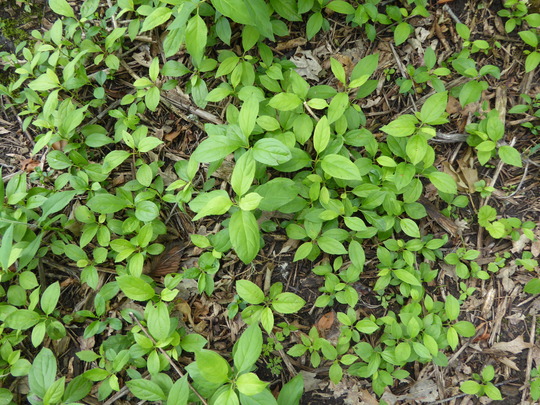|
Having trouble viewing this email? View it as a Web page.
July 1, 2024
July Weed of the Month: Preventing Common Buckthorn Reinvasion a CoverItUp! Project Update
The CoverItUp! project looked at what native species and seeding techniques reduced the regrowth of buckthorn
Monika Chandler & Maya Sarkar, Minnesota Department of Agriculture
Common buckthorn, Rhamnus cathartica, is an invasive shrub native to Europe, North Africa, and western Asia. Outside its native range, it overtakes forest understories by reducing species diversity and limiting forest regeneration. Common buckthorn also hosts agricultural pests including soybean aphid and oat crown rust, which can significantly decrease crop yields.
Unfortunately, common buckthorn is abundant in wooded areas of central and southern Minnesota, creating dense infestations that inhibit the growth of other plant species. Landowners who cut back these infestations face innumerable buckthorn seedlings in the following years. Fortunately, planting a carefully designed mix of native plant species after buckthorn removal can help limit new buckthorn saplings and restore native vegetation.
 Common buckthorn seedlings often carpet the ground after large buckthorn stems are removed. After native plantings establish, the native plants will shade out most subsequent buckthorn seedlings.
Download photo
Researchers with the University of Minnesota’s Terrestrial Plants and Pests Center created the CoverItUp! project to develop new guidance on what to plant after removing buckthorn stems. This work is supported by the Environment and Natural Resources Trust Fund.
The CoverItUp! project looked at what native species and seeding techniques reduced the regrowth of buckthorn at multiple sites across Minnesota. Here is their native plant species list. Some species performed better than others depending on the site.
- Grasses (particularly the wildrye Elymus species) performed well, while forbs were not a major driver of buckthorn suppression.
- Dense bare-root plantings of shrubs (particularly red elderberry) and trees (including sugar maple and balsam fir) resulted in the greatest suppression of buckthorn, but these plants can be costly at larger scales.
If you are deciding what to plant at a specific site, consider that many shrubs and trees will better tolerate shade, while many of the grasses, sedges, and wildflowers will do better with more light. To learn more about key findings from the project, you can watch this video.
Buckthorn management can feel overwhelming in the first years of treatment. It can be discouraging to see a carpet of buckthorn seedlings where mature buckthorn plants were recently removed. The CoverItUp! project found that almost all of the seedbank emerged as seedlings in the first and second year following removal of the mature buckthorn stands, contrary to popular belief of a long-lived seed bank.
To work toward successful management of buckthorn and establishment of other species, land stewards will have to control the buckthorn for a couple of years post-removal while the native plantings establish. The native plantings need this help until they are large enough to shade out subsequent buckthorn seedlings. Private landowners with forest or woodlots can contact their local Natural Resource Conservation Service office and ask about assistance.
To learn more about buckthorn management and the CoverItUp! project:
University of Minnesota Extension created this helpful video series on buckthorn.
MEDIA: For more information on Weed of the Month, contact Brittany Raveill, MDA Communications, at brittany.raveill@state.mn.us or 651-201-6131
|